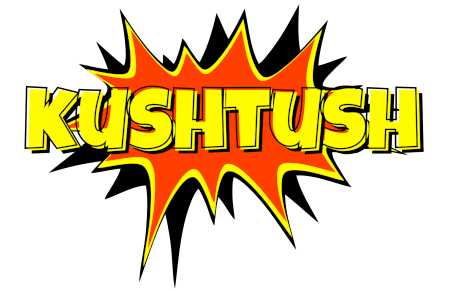Have you ever wondered how margarine, that familiar staple in many kitchens, came to be? The history of margarine is a fascinating tale that involves scientific discoveries, a culinary challenge issued by Emperor Napoleon III, and a battle for supremacy against butter. In this journey through time, we’ll unravel the story behind margarine’s creation and its evolution into the spread we know today.
The story of margarine begins in 1813 in the laboratory of French scientist Michel Eugène Chevreul. It was here that he stumbled upon a remarkable discovery—a new fatty acid that he named “acide margarique.” This fatty acid was characterized by its shiny, pearl-like deposits, inspiring Chevreul to coin the term “margarites,” derived from the Greek word for “pearly.”
Fast forward a few decades to the reign of Emperor Napoleon III. He was faced with a dilemma: both the impoverished citizens of his empire and his military forces needed an affordable alternative to butter. To incentivize the creation of such a substitute, he offered a reward to anyone capable of concocting a suitable and cost-effective replacement.
Enter chemist Hippolyte Mège-Mouriès, who rose to the challenge and invented a substance he initially called “oleomargarine.” By 1869, Mège-Mouriès had secured a patent for his process, which had earned him Napoleon’s coveted prize. His oleomargarine was primarily composed of beef tallow, salt, sulfate of soda, pig gastric juices, and a touch of cream. At this stage, it resembled a jelly more than the margarine we’re familiar with today but bore a similar taste to butter.
The Emergence of Unilever
Despite winning Napoleon’s reward, Mège-Mouriès’s invention didn’t immediately capture the public’s imagination. He sold his patent to a Dutch company called Jurgens in 1871, a move that would eventually give rise to Unilever—the leading manufacturer of margarine today. The Dutch entrepreneurs refined Mège-Mouriès’s techniques and established a global market for margarine by building factories in various European countries.
The Battle Begins
A significant challenge for margarine’s acceptance was the competition with butter. Around the turn of the century, Mark Twain overheard a businessman on a riverboat in Cincinnati remark that oleomargarine was being produced in massive quantities and sold at unbeatable prices, making it difficult for butter to compete.
The dairy industry, determined to protect its interests, resorted to political maneuvering. They successfully lobbied for the passage of The Margarine Act of 1886, which imposed a tax on every pound of margarine sold. This tax steadily increased, reaching ten cents per pound by the early 20th century. In Canada, margarine was even made illegal from 1886 to 1948.
Dyeing Margarine Yellow
To further deter sales of margarine and keep consumers loyal to butter, some U.S. states passed laws against dyeing margarine yellow. Margarine naturally appears white, so manufacturers began adding a slight yellow hue to mimic the color of butter. Interestingly, many butter producers also started dyeing their products to meet consumer expectations of a richer yellow hue.
Malicious Misconceptions
During this period, malicious advertisements and rumors aimed to tarnish the reputation of margarine. An infamous 1911 Chicago Tribune ad depicted arsenic, tin cans, and even cats being mixed with margarine ingredients, feeding into false beliefs about the composition of margarine. In reality, margarine and butter shared many similarities, with both comprising approximately 80% animal fat and 20% water.
Margarine’s composition underwent a significant change around the early 20th century. The scarcity of beef fat and advancements in hydrogenation techniques allowed for the use of vegetable oils, making margarine production economically viable. Between 1900 and 1920, oleomargarine became a blend of animal fats and vegetable oils.
Margarine’s Golden Era
The Great Depression, followed by rationing during World War II, further diminished the availability of animal fat. By the mid-1940s, the original form of margarine was nearly absent from grocery store shelves, replaced by the vegetable oil-based version. The scarcity of butter during these times contributed to margarine’s growing popularity.
The surge in margarine’s popularity during the mid-20th century led to changes in legislation. The extreme tax imposed on margarine for decades was finally lifted, placing margarine on a level playing field with butter for the first time since its inception.
Pros and Cons of Margarine
Margarine, a widely used butter substitute, has a long and intriguing history dating back to the early 19th century. Understanding the pros and cons of margarine is essential for making informed dietary choices. Let’s explore the advantages and disadvantages of this popular spread.
Pros of Margarine
Lower in Saturated Fat: Margarine is typically lower in saturated fat compared to butter. High saturated fat intake is linked to heart disease, so choosing margarine can be a heart-healthy option.
Cholesterol-Free: Margarine is naturally cholesterol-free, making it suitable for individuals with high cholesterol levels or those looking to maintain heart health.
Vegan-Friendly Options: Many margarine brands offer vegan versions that are free from dairy and animal-derived ingredients, catering to plant-based diets.
Lower in Calories: Margarine often contains fewer calories than butter, making it a better choice for individuals looking to manage their calorie intake.
Shelf Stability: Margarine has a longer shelf life than butter and is less prone to spoilage, which can be convenient for storage.
Customizable Varieties: Margarine comes in various formulations, including light, low-sodium, and specialty flavors, allowing consumers to choose options that align with their dietary preferences.
Versatile for Baking: Margarine can be an effective substitute for butter in baking, offering a similar texture and flavor profile.
Cons of Margarine
Trans Fats: Some margarine products, especially those with hydrogenated or partially hydrogenated oils, may contain trans fats. Trans fats are associated with adverse health effects, including an increased risk of heart disease.
Lack of Nutrients: Margarine generally lacks the nutrients found in butter, such as vitamins A, D, E, and K. Choosing margarine may mean missing out on these essential nutrients.
Artificial Additives: To achieve a butter-like appearance and taste, margarine often contains artificial additives, colorings, and flavorings, which may not align with clean eating preferences.
Processing Methods: The hydrogenation process used to solidify vegetable oils in margarine can produce harmful trans fats. Opting for non-hydrogenated margarine varieties is advisable.
Taste Differences: While margarine aims to replicate the taste of butter, it may not satisfy those who prefer the distinct flavor of real butter.
Environmental Concerns: Margarine production from palm oil has raised environmental concerns, as palm oil cultivation can lead to deforestation and habitat destruction.
Debate Over Healthiness: The ongoing debate between butter and margarine’s healthiness makes it challenging for consumers to make informed choices. New research may periodically shift perceptions of their relative health benefits.
The history of margarine showcases the adaptability of our culinary palate. From its early days as a humble butter substitute to its diverse formulations catering to various dietary needs, margarine illustrates how food innovations can respond to changing times and consumer demands. As we savor the spreads of today, we pay homage to a culinary journey that transcends borders and centuries.
- Enhancing Trust with Blockchain Identity Verification - January 24, 2024
- How Marijuana Turns You into a Food Lover - December 1, 2023
- Behind the Scenes of the U.S. Nuclear Gun - November 28, 2023

